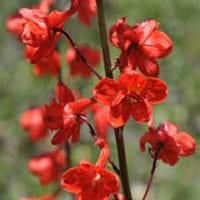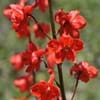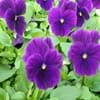Life Span
Perennial
Perennial
Type
Flowering Plants, Ornamental Plants, Shrubs
Flowering Plants
Origin
Africa
Mediterranean, North Africa, Northern America
Types
Not Available
Anthony Peak Lupine, Silver Bush, Garden Lupine, Spider Lupine, Adonis Lupine
Habitat
gardens, meadows
Pine barrens, Sandy areas
USDA Hardiness Zone
Not Available
3-7
Sunset Zone
Not Available
1a, 1b, 2a, 2b, 3a, 3b, 4, 5, 6, 7, 14, 15, 16, 17
Habit
Upright/Erect
Upright/Erect
Minimum Width
Not Available
Flower Color
Red, Rose
Blue, Pink, White
Flower Color Modifier
Bicolor
Not Available
Fruit Color
Not Available
Not Available
Leaf Color in Spring
Green
Light Green
Leaf Color in Summer
Light Green
Green
Leaf Color in Fall
Green, Yellow green
Green
Leaf Color in Winter
Green, Light Yellow, Tan
Not Available
Leaf Shape
Palmate and toothed
Oblovate
Plant Season
Spring, Summer, Fall, Winter
Summer
Sunlight
Full Sun, Partial Sun
Full Sun, Part sun
Type of Soil
Clay, Loam, Sand
Loose, Moist
The pH of Soil
Acidic, Neutral, Alkaline
Slightly Acidic
Soil Drainage
Well drained
Well drained
Bloom Time
Not Available
Late Spring, Summer
Tolerances
Heat And Humidity
Not Available
Where to Plant?
Ground, Pot
Ground
How to Plant?
Seedlings, Stem Cutting
Seedlings
Plant Maintenance
Medium
Medium
Watering Requirements
It cannot sustain wet-feet, Keep ground moist, Requires regular watering, Water more in summer
Form a Soil ring to water efficiently, Keep the ground moist but not water-logged, Requires a lot of watering, Water in morning to avoid prompting diseases
In Summer
Lots of watering
Lots of watering
In Spring
Moderate
Moderate
In Winter
Average Water
Average Water
Soil pH
Acidic, Neutral, Alkaline
Slightly Acidic
Soil Type
Clay, Loam, Sand
Loose, Moist
Soil Drainage Capacity
Well drained
Well drained
Sun Exposure
Full Sun, Partial Sun
Full Sun, Part sun
Pruning
Cut away fading foliage, Do not prune during shooting season, Remove damaged leaves, Remove deadheads
Prune ocassionally
Fertilizers
High-phosphorous fertilizers used, Organic Flower Fertilizer
All-Purpose Liquid Fertilizer
Pests and Diseases
Bacterial leaf spot, fungus, Mealybugs
Aphids, Fusarium wilt, Root rot, Thripes
Plant Tolerance
Heat And Humidity
Drought
Flower Petal Number
Single
Single
Foliage Texture
Fine
Medium
Foliage Sheen
Matte
Matte
Attracts
Butterflies
Bees
Allergy
Severe allergen, Skin irritation, Skin rash, Throat itching, Vomiting
Abdominal pain, Asthma, Nausea, Swelling in the face, Vomiting
Aesthetic Uses
Beautification, Borders, Showy Purposes, Used for decorating walls, fences, gates, hedges, etc.
Showy Purposes
Beauty Benefits
Not Available
Not Available
Environmental Uses
Air purification
Air purification
Medicinal Uses
Not Available
Anthelmintic, Diuretic, Treatment of ulcers
Part of Plant Used
Flowers
Flowers, Seeds
Other Uses
Used in making blue ink
Showy Purposes, Used as Ornamental plant, Used for fragrance
Used As Indoor Plant
No
No
Used As Outdoor Plant
Yes
Yes
Garden Design
Edging, Feature Plant
Bedding Plant, Container, Feature Plant, Foundation, Rock Garden
Botanical Name
Delphinium cardinale
Lupinus
Common Name
Scarlet larkspur, Cardinal larkspur
Hybrid Lupine
In Hindi
लाल रंग Delphinium
वृक संयंत्र
In German
Scarlet Delphinium
lupine
In French
Scarlet Delphinium
usine de lupin
In Spanish
Scarlet Delphinium
planta de lupino
In Greek
Scarlet Δελφίνιο
φυτό λούπινο
In Portuguese
Scarlet Delphinium
tremoço planta
In Polish
Scarlet Delphinium
łubin roślin
In Latin
Delphinium coccino
Plinio herba
Phylum
Tracheophyta
Magnoliophyta
Class
Magnoliopsida
Magnoliopsida
Order
Ranunculales
Fabales
Family
Ranunculaceae
Fabaceae
Clade
Angiosperms, Eudicots
Not Available
Tribe
Not Available
Not Available
Subfamily
Not Available
Faboideae
Importance of Scarlet Delphinium and Lupine
Want to have the most appropriate plant for your garden? You might want to know the importance of Scarlet Delphinium and Lupine. Basically, these two plants vary in many aspects. Compare Scarlet Delphinium and Lupine as they differ in many characteristics such as their life, care, benefits, facts, etc. Every gardener must at least have the slightest clue about the plants he wants to plant in his garden. Compare their benefits, which differ in many ways like facts and uses. The medicinal use of Scarlet Delphinium is Not Available whereas of Lupine is Anthelmintic, Diuretic and Treatment of ulcers. Scarlet Delphinium has beauty benefits as follows: Not Available while Lupine has beauty benefits as follows: Not Available.
Compare Facts of Scarlet Delphinium vs Lupine
How to choose the best garden plant for your garden depending upon its facts? Here garden plant comparison will help you to solve this query. Compare the facts of Scarlet Delphinium vs Lupine and know which one to choose. As garden plants have benefits and other uses, allergy is also a major drawback of plants for some people. Allergic reactions of Scarlet Delphinium are Severe allergen, Skin irritation, Skin rash, Throat itching and Vomiting whereas of Lupine have Abdominal pain, Asthma, Nausea, Swelling in the face and Vomiting respectively. Having a fruit bearing plant in your garden can be a plus point of your garden. Scarlet Delphinium has no showy fruits and Lupine has no showy fruits. Also Scarlet Delphinium is flowering and Lupine is flowering. You can compare Scarlet Delphinium and Lupine facts and facts of other plants too.





